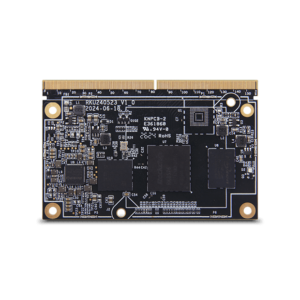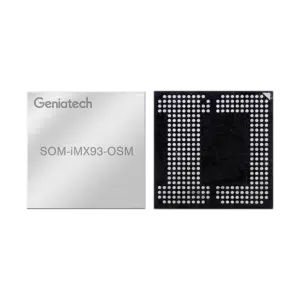Designing with Computer on Module: A Complete Guide for Developers
Designing with Computer on Module: A Complete Guide for Developers
Blog Article
The rapid development of technology has pushed significant inventions in stuck programs, certainly one of which will be the imx8m nano computer on module Acting as a link between custom technology and off-the-shelf adventures, the SoM is redefining how developers method stuck system design. This website shows the primary comprehension of a System on Element and their growing purposes in several industries.

What's a System on Module (SoM)?
A System on Module (SoM) is a small, ready-to-use board that combines all of the key components of a method about the same module. That typically includes the processor, storage, energy management models, and sometimes additional peripherals like Wi-Fi or Ethernet. Unlike a normal single-board computer, an SoM doesn't include connections and program locations pre-installed, indicating it should be combined with a service table to form an entire system.
Designed to improve development workflows, the modular character of an SoM enables designers to miss the complicated procedure for designing and building each individual component from scratch. By adopting an SoM, companies may concentrate more on the application-specific functions of their products.
Benefits of Using System on Component
The integration of an entire system on a singular element gift suggestions a few benefits. First, it significantly reduces the full time necessary for product development. Pre-tested modules ensure balance, saving weeks of benefit design teams.
Furthermore, the scalability of an SoM allows businesses to modify efficiency levels predicated on project requirements. Like, a low-cost option can easily range in to a high-end solution by trading the model in the element while keeping the company panel design. This method reduces engineering risks while promoting long-term cost-efficiency.
Lastly, the stability of an off-the-shelf component assures high compatibility with present resources and frameworks, which makes it well suited for both little startups and large enterprises looking to hit the industry quickly.
Critical Purposes of SoM in Stuck Programs
The usage of Process on Modules spans many high-demand industries including but not limited to medical products, automation, and consumer electronics.
Medical Devices
Accuracy and consistency are paramount in healthcare. Process on Segments with protected handling capabilities are stuck in watches, imaging devices, and lightweight diagnostic tools.
Industrial Automation
Strong and energy-efficient, an SoM is essential for commercial control systems and autonomous robotics. Their scalable architecture helps high-speed data running and IoT connectivity.
IoT Products

Consumer items like clever thermostats, wearable devices, and actually house personnel include an ultra-compact Program on Element for easy performance.
The Program on Component remains to get grip because of its decreased complexity and versatility, cementing it self as a future-proof option in the stuck techniques sphere. Market leaders are already leveraging these modules, and their scope is expected to expand further as technology evolves.
Report this page